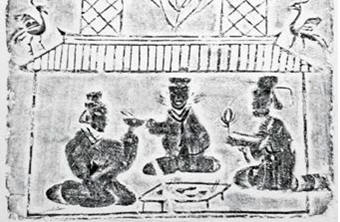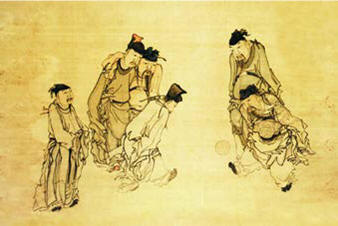China looks back on nearly 5000 years of continued history tremendously rich on innovation and scientific achievements. For centuries the Chinese had been at the forefront of humanity's intellectual and technological progress and often far ahead of the Western world. Many Chinese inventions had a huge impact on civilization not only in China, but across the globe and many of them are still used today. Focus Vision peeks into this rich treasure chest of innovation.
Joseph Needham, scientist, discoverer and author of 'Science and Civilization in China' the world's most complete encyclopedia of Chinese science and inventions.
It was this bespectacled, tall, charismatic Englishman that loved dancing, singing and swimming naked, who should bring the enormous Chinese heritage on innovation and science into light and to make the world aware of the ground breaking achievements that had been going on in China for thousands of years. The man's name was Joseph Needham (1900 – 1995), a renowned scientist and professor of chemistry who risked his life during World War II, by undertaking several strenuous journeys across war torn China, to discover and to save evidence of China's highly innovative past. He traveled thousands of miles by plane, truck on horseback and by foot, met with Chinese leaders like Zhou Enlai or Jiang Kai-Shek, built up a vast network of Chinese scholars and simple peasants to help him collect and save historic evidence. The outcome was a wild collection of several tons of books, scrolls, paintings, photographs and artifacts that were shipped to Europe and piled up in his private library in Cambridge, England.
After the War with the help of his Chinese wife and fellow scientists, he started to painstakingly categorize and order the heaps of materials. Enormous tasks that would take him the rest of his life and would have scholars continue his work up to this day. The results should not only unveil thousands of groundbreaking Chinese inventions and shed light onto most remarkable scientific achievements, but should also shatter historic world views, by proving that many history changing inventions did not originate from the West, but were actually first discovered in China, such as printing, the compass, firearms and paper money.


A phenomenon fascinating scholars and people exploring Chinese history and should become famous as “the Needham question” was: How was it possible, that a civilization with such a long history, that had prospered over thousands of years and developed some of humanities greatest innovative achievements, suddenly fell behind countries it used to greatly over-shadow? Opinions vary and there seems to be no clear answer. Some say, that during Ming Dynasty (1368 – 1644), the country isolated itself from the outside world preventing important developments reaching China, while at the same time, development inside the country stagnated in self-complacency. Other scholars argue, that the isolation is exaggerated and that trade and political connections to the outside continued and science and technology further developed, although at a slower pace. Another theory is, that due to the vast amount of people and natural resources, there were always enough supplies of cheap labor and raw materials and no larger outside enemies in the region, so that China had no regional competitive pressure. Also, some analysis that the ruling Confucianism had been restraining Chinese from taking adventures but just follow the experiences. These factors were largely different from Europe and strongly influenced the events leading to the industrial revolution in the West. But as Needham’s research and personal encounters with Chinese scientists show that intellectual achievements had never completely stopped.
And another tradition in Chinese history, the tradition of knowledge exchange and adaptation between China and the rest of the world, seems to regain strength today. China has been a trading nation for the larger part of its history. This meant goods, people, culture and knowledge being moved and being exchanged. Buddhism, the strongest religion in China, had been imported from India. Xi’an, the capitol of the Qin Dynasty, used to be a major trading point on the Silk Road and then the most multicultural and intellectually prospering city in the world. Jesuit monks from Europe brought knowledge in mathematics and astronomy to the Chinese emperor’s court and had a strong impact on science and administration. Towards the end of the last emperor and during WWII Western influence and technology started to seep in from the coastal cities. During Mao’s reign close ties in science and technology were built with the former Soviet Union, which among others, brought China the know-how in nuclear technology and later on aeronautics and space technology. Today knowledge exchange with the world continuous and promises to be even richer in the future. More and more China is coming back to not only be on the receiving end of business, science and technology, but to increasingly contribute to world progress as an innovator. Already today Chinese scientists and companies are trailblazing the fields of bio-, medical- and material science, alternative energy or telecommunications. The government is investing vast amounts of resources into the field of higher education and innovation programs, while foreign companies are setting up huge R&D basis in China. All this is very promising evidence, that China is slowly but surely re-uniting with its thousand year old heritage of knowledge and innovation.
See More: Innovation in China: Copy Cat? Innovation Tiger?





